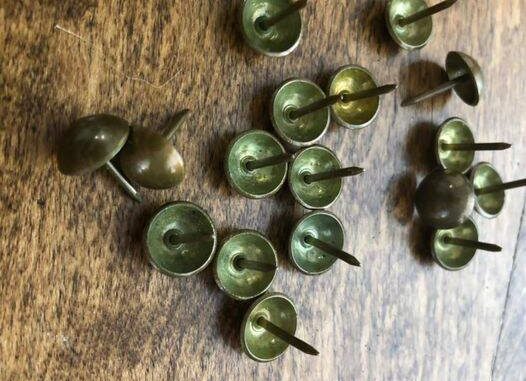
Origins and Early History Thumb tacks, widely used in offices and homes, have a history spanning centuries. Initially, they were basic nails with flattened heads, designed for easy insertion by hand. Over time, they evolved with advancements in 19th-century steel manufacturing, enabling mass production and widespread adoption.
Evolution of Design and Materials Antique steel thumb tacks were typically made from durable, sharp steel. They were crafted into slender shafts with a sharp end and a flat or rounded head, often embellished with decorative details that showcased craftsmanship of the era.
Practical Uses in Everyday Life Steel thumb tacks served numerous practical purposes throughout history. In offices, they were essential for pinning notices, memos, and photos to bulletin boards. At home, they secured fabric, hung decorations, and facilitated various crafts. Their versatility made them indispensable in professional and domestic settings alike.
Cultural Significance and Legacy Beyond utility, antique steel thumb tacks carry cultural significance as symbols of an era when handwritten communications were displayed publicly. Found in historical archives, they preserve documents and photos, offering insights into past times.
Collectibility and Modern Appeal Today, antique steel thumb tacks are prized by collectors of vintage office supplies and ephemera. Their aesthetic appeal and historical value make them sought-after additions to collections focused on antique stationery and desk accessories. Collectors appreciate the craftsmanship and design variations across different periods and manufacturers.
Conclusion The evolution of antique steel thumb tacks mirrors advancements in office and household essentials across centuries. From their simple beginnings as nails to the refined steel forms we know, they have left a lasting impact on utility and cultural heritage. As relics of the past, they continue to captivate collectors and remind us of eras when tangible artifacts adorned notice boards and walls, preserving handwritten communication for future generations.
Leave a Reply